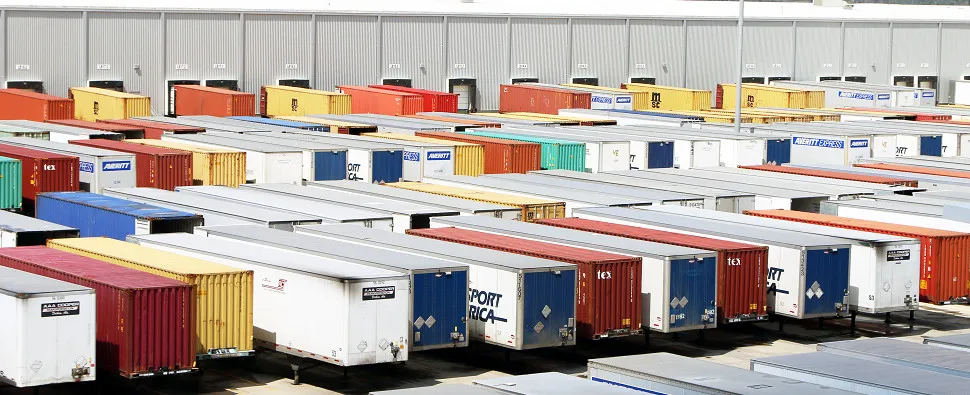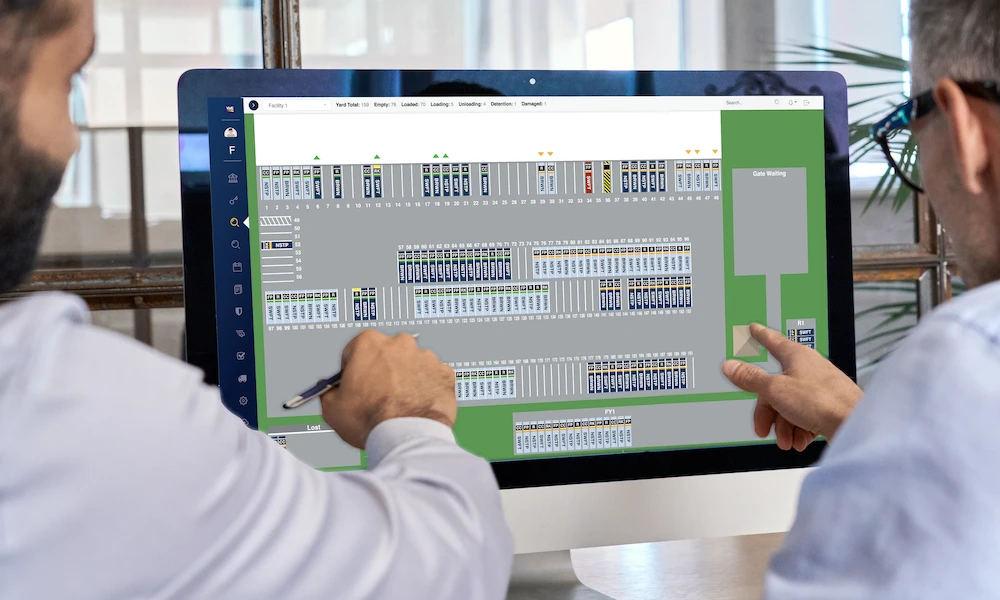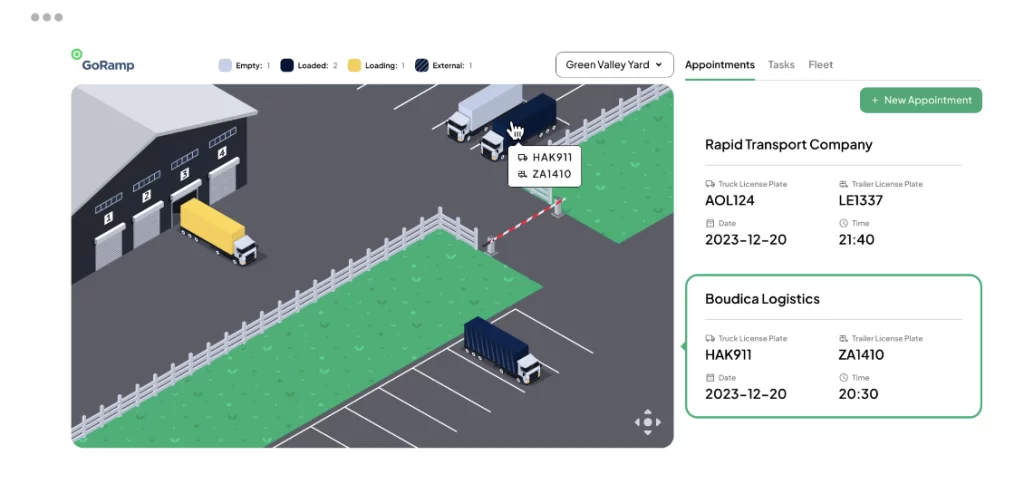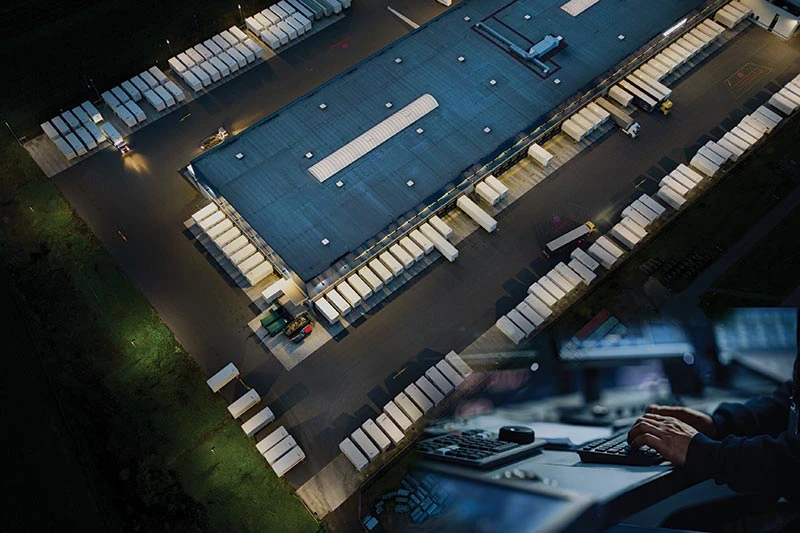
Why Yard Management Matters More Than Ever
In today’s logistics and supply chain world, efficiency is everything. Companies invest heavily in Transportation Management Systems (TMS) to optimize freight movement and Warehouse Management Systems (WMS) to streamline storage and picking. But there’s a critical gap between these two: the yard—where trailers, trucks, and shipments often fall into a logistical black hole.
That’s where Yard Management Systems (YMS) come in.
A YMS is the bridge between transportation and warehouse operations, providing real-time visibility, automation, and control over everything happening in the yard. Whether you’re running a retail distribution center, a manufacturing facility, or a major logistics hub, an optimized yard means lower costs, faster turnaround times, and better operational flow.
In this guide, we’ll break down exactly what a YMS does, why companies are investing in these solutions, and how to choose the right system for your operation.
💡 Did You Know:
The market for YMS systems is expected to grow by a whopping 11% by 2032?
What is a Yard Management System (YMS)?
A Yard Management System (YMS) is software that helps logistics, retail, manufacturing, and warehouse facilities manage the movement, tracking, and organization of trailers, trucks, and shipments in the yard.
Think of it like air traffic control for your yard—directing inbound and outbound traffic, reducing congestion, and ensuring that assets are exactly where they need to be.
A modern YMS provides:
✅ Real-time visibility of all trailers and yard assets, shown in a digital twin of the yard
✅ Automated task management for yard drivers and hostlers
✅ Gate management tools for check-in, check-out, and scheduling
✅ Integration with WMS, TMS, and ERP systems to keep operations in sync
✅ Analytics & reporting for tracking key metrics like dwell time and gate throughput
The end goal? Faster, smarter, and more cost-effective yard operations.

Why Does a Yard Management System Matter?
Many companies still rely on spreadsheets, radios, and whiteboards to track their yard movements. That works—until it doesn’t.
Here’s what happens when yard management isn’t optimized:
❌ Lost trailers – Yard workers spend valuable time searching for misplaced assets.
❌ Congestion & bottlenecks – Gate delays and inefficient dock scheduling lead to detention fees and missed deliveries.
❌ Poor labor utilization – Yard jockeys waste time moving trailers inefficiently.
❌ Missed KPIs – Without real-time data, it’s impossible to track yard performance or improve efficiency.
❌ Reactionary decision-making – Without a system in place, managers rely on gut instinct instead of data-driven insights.
A YMS eliminates these problems by bringing structure, automation, and intelligence to yard operations. Companies using a YMS typically see:
📉 40–50% reduction in trailer search times
📉 20–30% lower detention and demurrage fees
📉 Improved labor productivity for yard drivers and gate staff
📉 Better coordination between transportation and warehouse teams
Core Features of a Yard Management System
A robust YMS includes several key features that help facilities manage their yard more effectively.
1. Real-Time Yard Visibility
- See exactly where trailers, containers, and assets are located at any given moment.
- Reduce lost trailers and streamline retrieval times.
2. Gate Management & Check-In Automation
- Digitally schedule and track inbound and outbound trucks.
- Reduce gate congestion with automated check-in kiosks or RFID tags.
3. Yard Task Automation
- Assign trailer moves, prioritizing urgent shipments.
- Optimize yard jockey routes to eliminate wasted movements.
4. Integration with WMS, TMS, and ERP Systems
- Ensure seamless coordination between the yard, warehouse, and transportation teams.
- Automate load scheduling, reducing delays.
5. Reporting & Analytics
- Track yard KPIs like dwell time, turn time, and trailer utilization.
- Identify bottlenecks and areas for improvement.
While some Yard Management Systems are sensor-based (requiring RFID, GPS, or other similar technology), leading vendors have realized that sensors are often not worth the financial investment for companies looking to streamline yard operations. Read our full article about sensors in the yard for more information.

Who Benefits from a YMS? (Industry Use Cases)
A Yard Management System isn’t just for massive distribution centers—it provides benefits across multiple industries.
📦 Retail & Distribution – Streamlines trailer movements, reduces dock congestion, and keeps inventory flowing.
🏭 Manufacturing – Coordinates inbound raw materials and outbound shipments to prevent supply chain delays.
🚛 3PL & Logistics Providers – Improves visibility across multiple yards, optimizing trailer usage and carrier scheduling.
🚢 Intermodal & Container Yards – Helps track inbound/outbound container movements and reduces dwell time fees.
🚗 Automotive & Finished Vehicles – Keeps track of thousands of cars in staging lots, improving visibility and coordination.
⛽ Bulk & Transloading Facilities – Ensures efficient scheduling and movement of tanker trucks, railcars, and bulk cargo.
If your yard is struggling with inefficiencies, bottlenecks, or visibility issues, a YMS is likely the missing piece in your supply chain optimization.
Choosing the Right YMS: What to Look For
If you’re considering a YMS for your facility, here are the most important factors to evaluate:
🔹 Scalability – Will the system grow with your business?
🔹 Ease of Integration – Does it connect seamlessly with your TMS, WMS, or ERP?
🔹 User-Friendliness – Is the interface intuitive for yard staff and drivers?
🔹 Automation Capabilities – Does it reduce manual work and streamline operations?
🔹 Real-Time Visibility – Does it provide live updates on trailer and asset locations?
🔹 Mobile & Cloud Access – Can it be accessed remotely for real-time decision-making?
🔹 Support & Customization – Does the vendor offer strong customer support and customization options?
Leading YMS providers in the U.S. each offer different strengths depending on the industry and use case.
Conclusion: Why Investing in a YMS is a Game-Changer
A well-implemented Yard Management System doesn’t just improve efficiency—it transforms yard operations. From reducing congestion at the gate to ensuring seamless coordination between transportation and warehouse teams, the benefits of a YMS extend across the entire supply chain.
Companies that adopt a YMS see reduced costs, improved visibility, and faster throughput—all of which lead to a more competitive operation.
If your facility is still relying on manual tracking and outdated processes, it might be time to consider how a YMS can revolutionize your yard.

